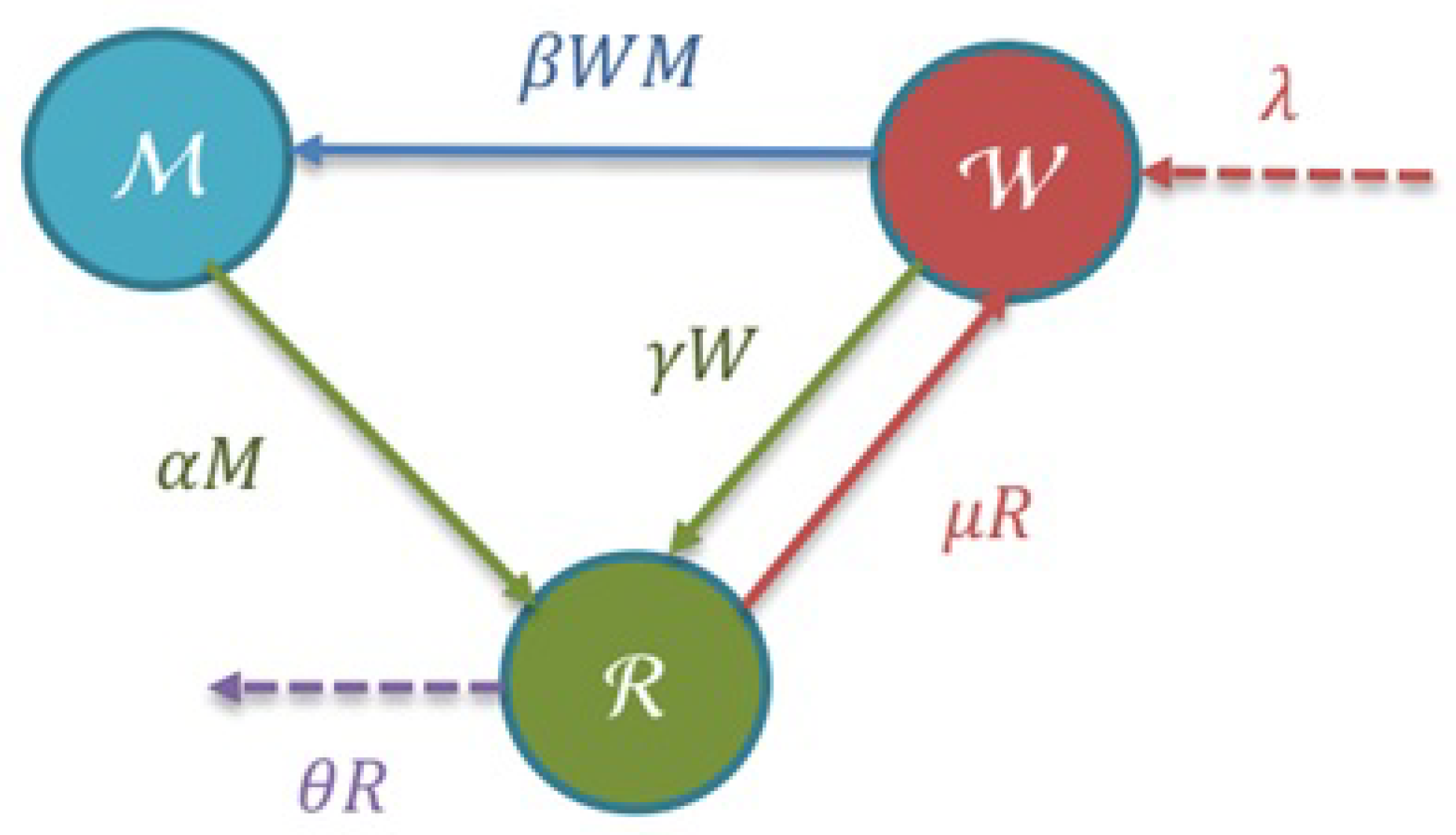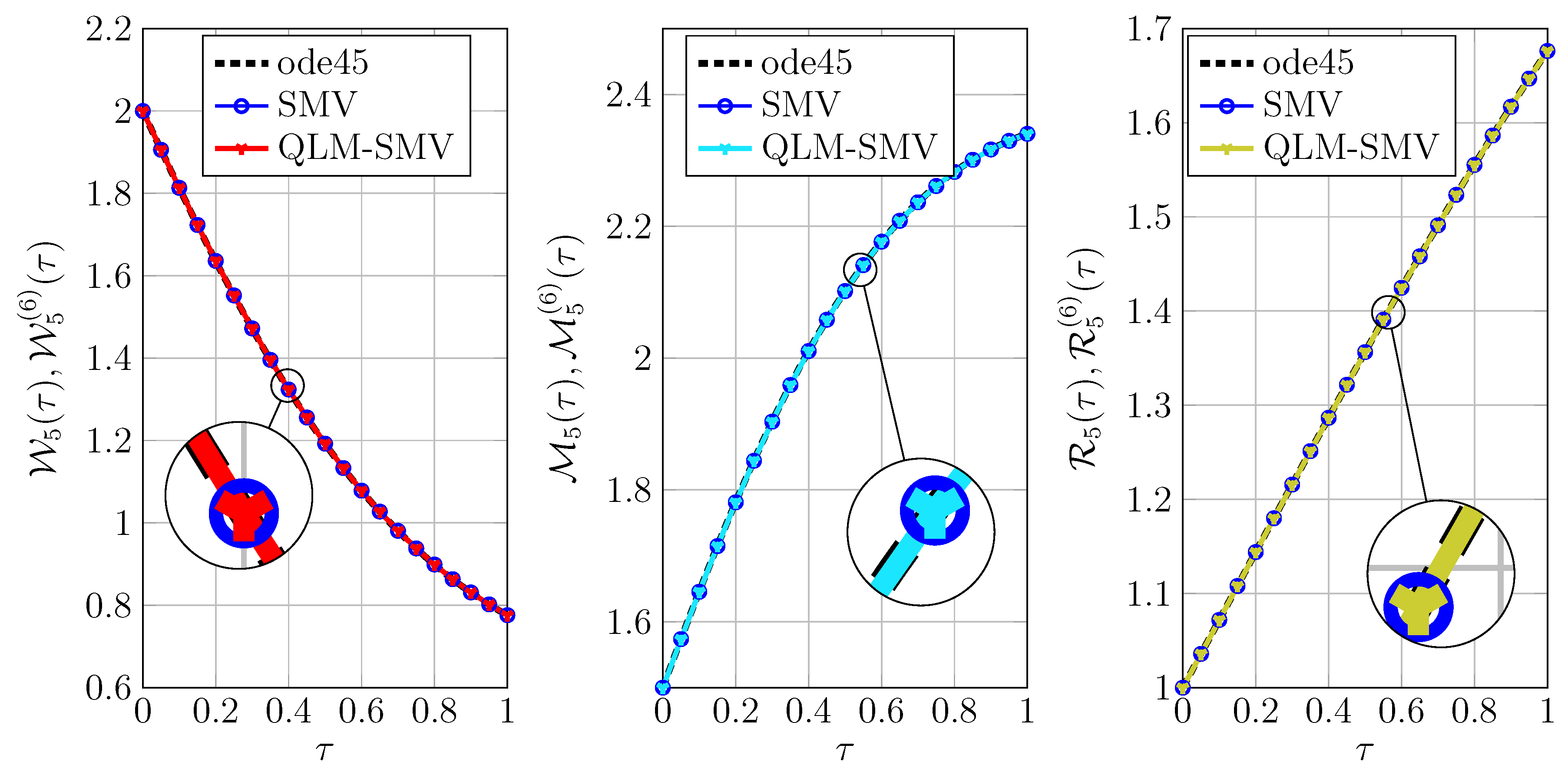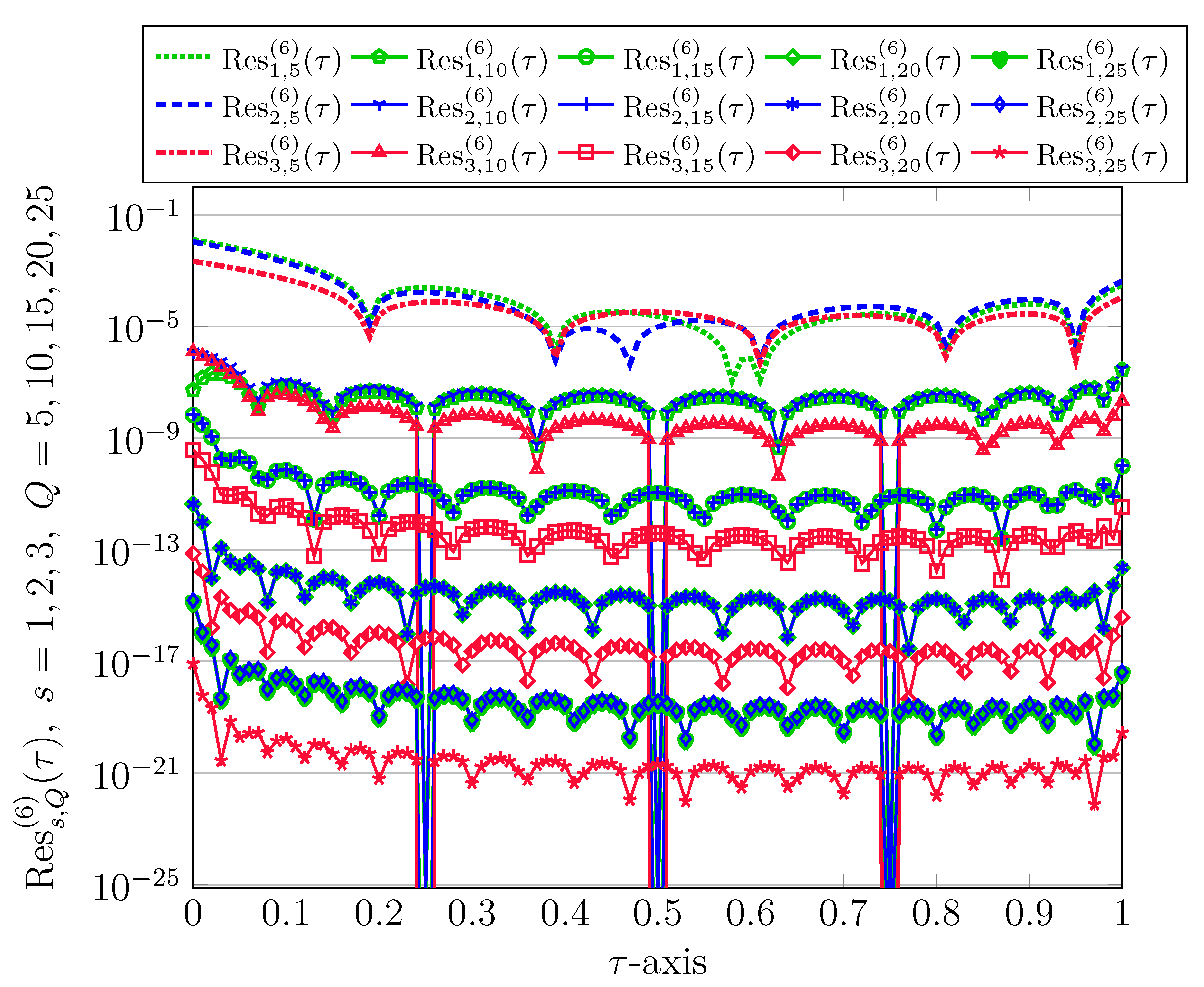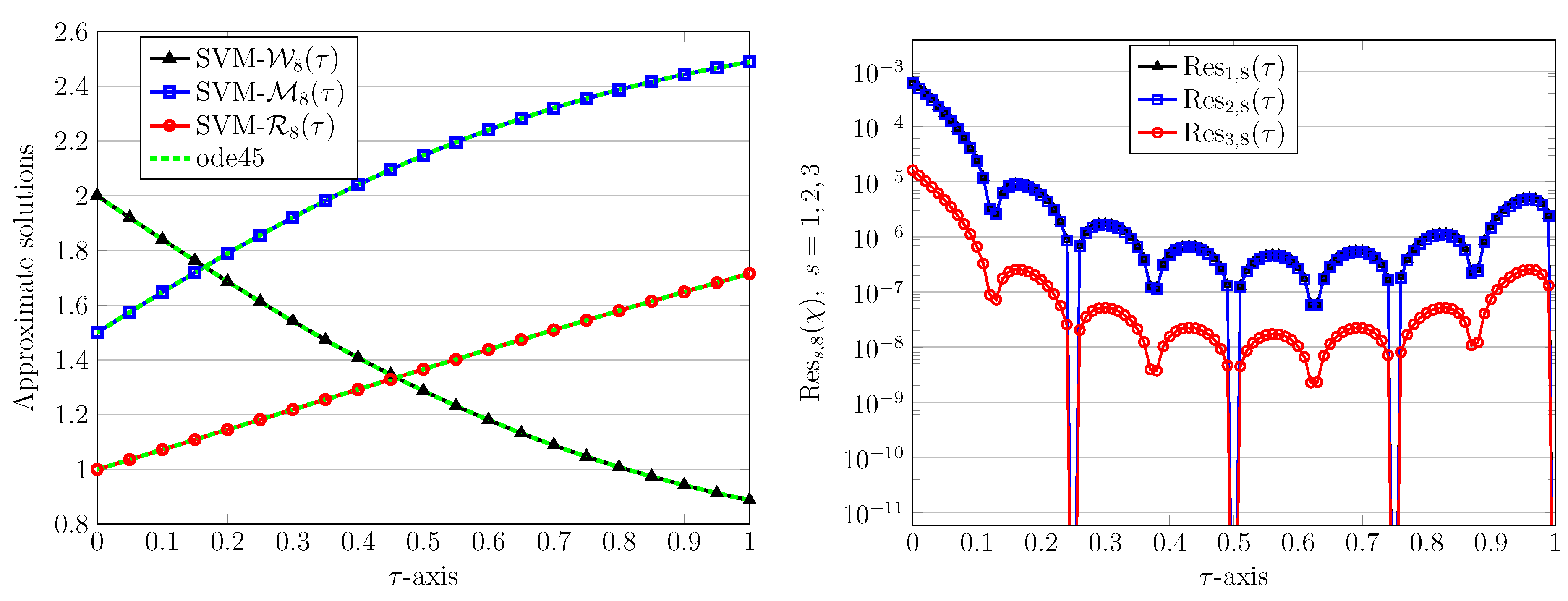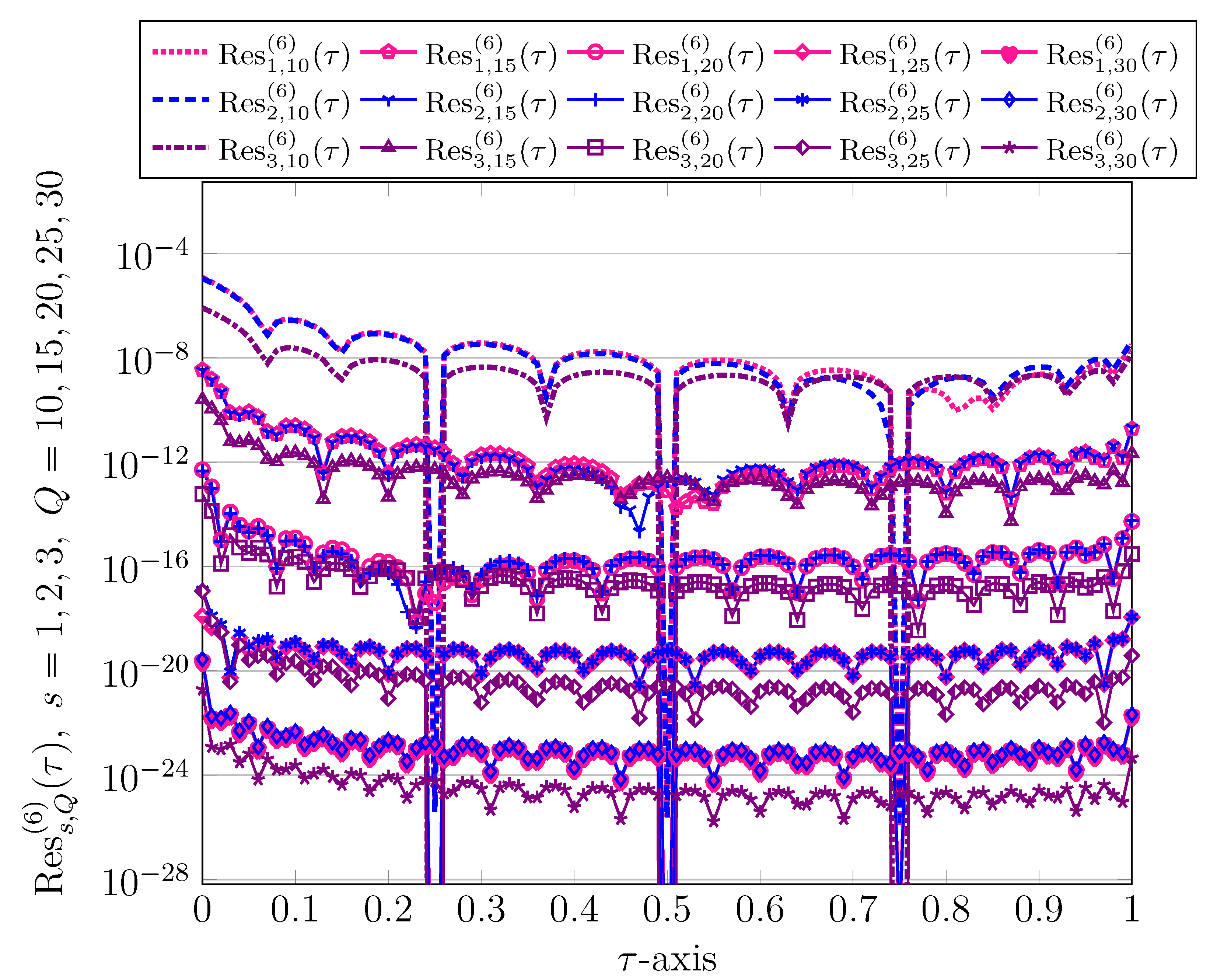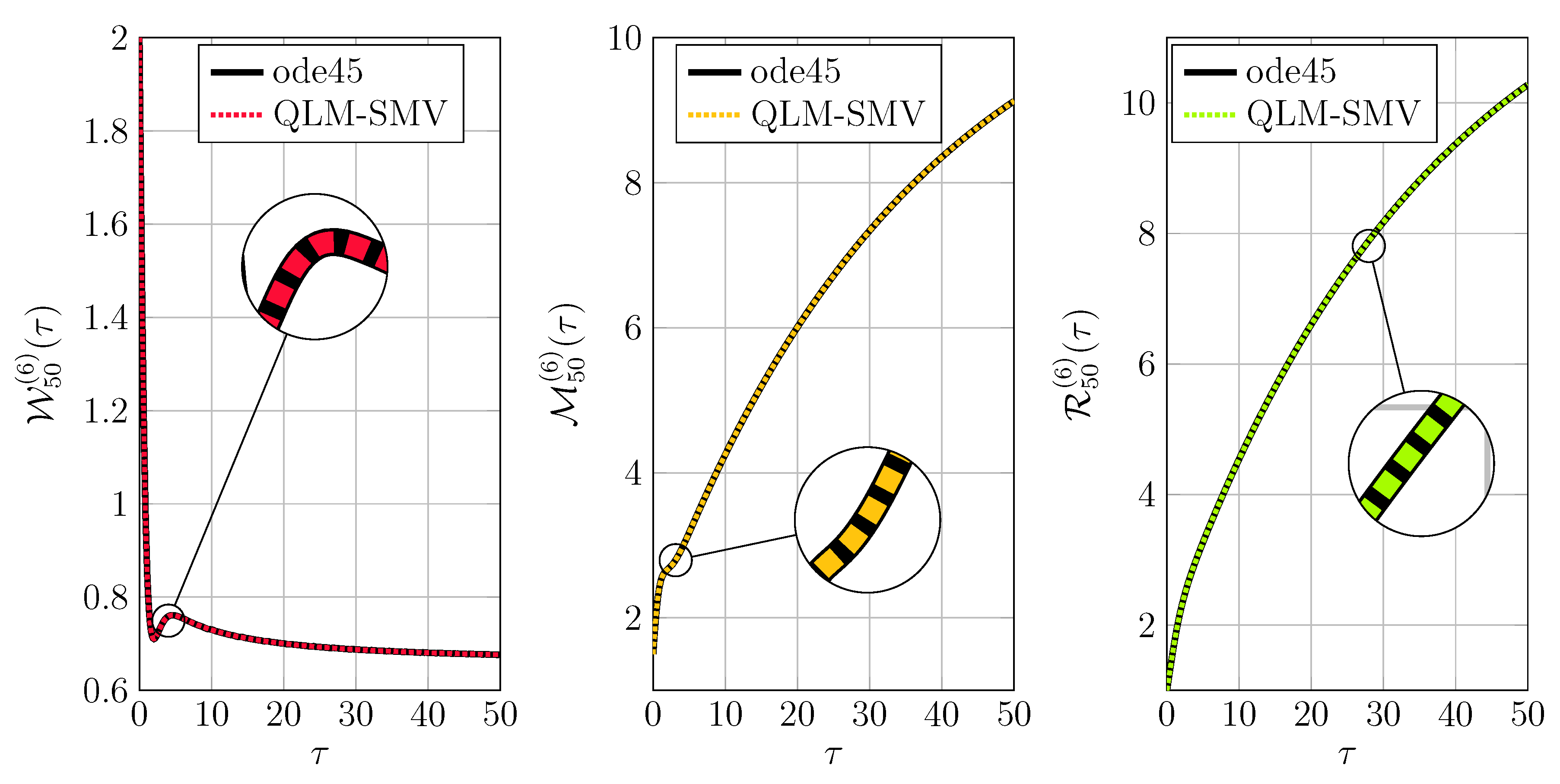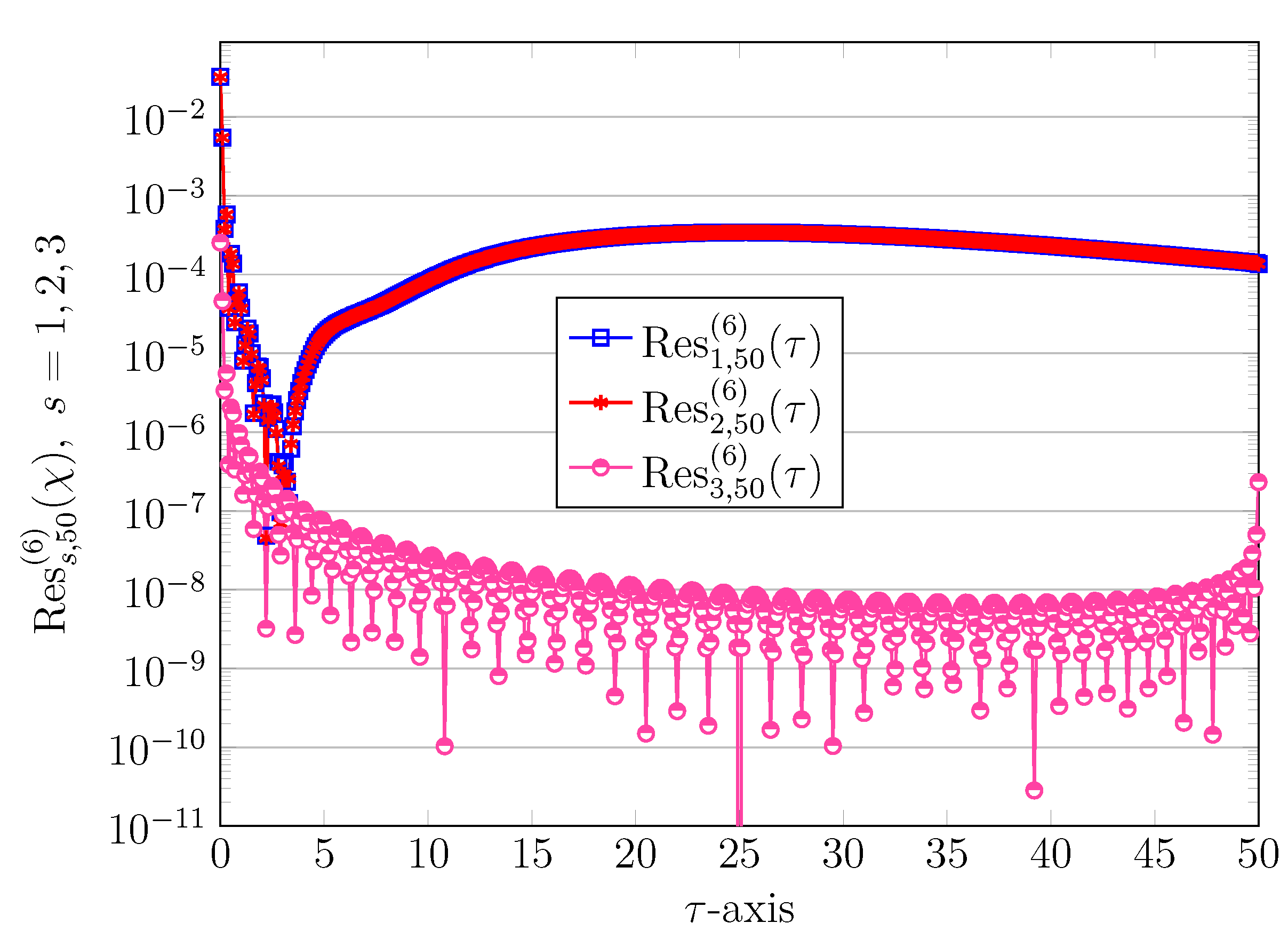1. Introduction
Over time, people have been trying to introduce plastic waste into the marine and oceanic environment in several direct or indirect ways, damaging the ecosystem and also putting human lives at risk. With the lag-of control intervention of marine protection, most of the oceans all over the world are filled with a different form of plastic waste [
1]. The increased rate of plastic use is referred to as the fact of being low in cost and better in performance compared to other natural materials pushing the world to increase the use of plastic and thus the increase of the produced waste flushing eventually to the oceans and increasing the risk [
2]. The initial estimation of the annual plastic waste being delivered to the oceanic world was estimated in 2010 to be almost 100 million within 50 km of the coastal region, including approximately 240,000 microplastic materials which are considered a big threat to the environment. These microplastics affect both oceanic entities while digesting them and the possibility of releasing toxic metals that may harm marine ecology. About 54 parentages of the known marine species are estimated to be affected by this plastic waste according to [
3]. The United Nations Environment Program (UNEP) issued a report on a global assessment of the effect of oceanic plastic waste and its effect on different marine species ranging from plankton, birds, mammals, and shellfish [
4]. They issued a warning that every living creature in the ocean is affected by this plastic waste in one way or another, either by poisoning, starvation, or suffocation. The thrown plastic bottles manufactured from poly (ethylene terephthalate) (PET) in the ocean have been proved through several studies that they can be recycled after being found floating into the ocean but the missing part is the application of collection methods [
5]. The presence of plastic waste in the ocean comes from the increasing demand for plastic use in several parts of multiple industries. The use of plastic, for example, in the medical field, can save human lives through the manufacturing of prostatic parts for people with disabilities. On the other side, the disadvantages of using a large amount of plastic also have a prominent part since plastic does not decompose easily in the environment and this may result in its accumulation in the Ocean exponentially [
6]. The accumulative productivity of plastic exceeds more than 8 million tons per year and around 80 percent of this amount is dumped into the ocean illegally through countries from the Middle East and Asia [
7]. With the rapid and increasing economy of these countries and with the lack of wastewater management systems, 16 out of the top 20 countries come from middle-income countries [
8]. The overcome this crisis, countries have to come up with a plan to limit the amount of plastic waste dumped into their oceans to support marine protection. The “G20 Action Plan on Marine Litter” targets the limitation of such plastic garbage through some approaches depending on the circular economy. To find some solution to this problem, researchers have been trying to find some suitable ways to overcome this problem with the aid of mathematical modeling which may help in giving more understanding in dealing with such issues. For more details, the reader may refer to [
9,
10] and references therein.
Mathematical modeling for such problems gains over the past few years and increasing interest in these issues arising with the present need for efficient solutions. These models have many applications in different areas of science including physics, chemistry, biology, and earth since. These mathematical models have proven to be valuable tools for simulating several areas in biology. For example, Yoram et al. [
11] have investigated the modeling of pancreatic cancer growth, suggesting some treatment strategies to encounter such a dangerous disease. In addition, the simulation of brain tumors and the immunotherapy effect on the glioma-immune interaction have been simulated by Khajanchi in [
12] concluding reducing the growth of the glioma cell population and increasing the cell count of macrophages. Furthermore, some types of cancer such as bladder cancer have been analyzed, taking into account different treatments such as BCG immunotherapy as indicated by Lazebnik et al. [
13]. In epidemiology, understanding the dynamics of diseases through mathematical modeling represents a critical factor in controlling these diseases. Gude et al. [
14] developed a decision support system for detecting and understanding the COVID-19 virus through system dynamics. Shtilerman et al. [
15] adapted a novel version of the Laplace method to predict the number of species in a cretin region. The effect of memory is witnessed while simulating these diseases and the use of fractional calculus helps in this regard. For example, Shaikh et al. [
16] considered a fractional order definition of the with Mittag–Leffler kernel to simulate the HIV/AIDS model. The fractional-order HIV-1 infection of CD4+ T-cells considering the impact of antiviral drug treatment is investigated in [
17]. For more details on the modeling of real life phenomenon, see [
18,
19,
20,
21,
22] and references therein.
In this paper, we are concerned with the (local) stability properties and the simulation of a system describing the waste plastic management (WPM) in the ocean. The waste plastic management (WPM) includes three compartments: waste plastic material, marine debris, and reprocess (recycle). The amount (size) of each compartment at time
is, respectively, denoted by
,
, and
. The marine debris comes from the transformation of plastic waste. This process occurs at a bilinear incidence rate and it is added by
per unit of time. The waste plastic is recycled directly at a rate
, while an amount of
of new waste plastic is reproduced per unit of time. The recycling rate of marine debris is
, while recycled material may become waste again at the rate
or may be lost from the system of plastic management at the rate
. The transitions among compartments in the waste plastic management are shown in
Figure 1.
Thus, the WPM is stated through the following three differential equations with quadratic nonlinearity system given by [
23]
where
. Along with (
1), the given initial conditions are
In the model (
1), the three constants
are the initial amounts of the variables
,
, and
at the beginning, which are non-negative.
In this work, we first analyze stability properties of the WPM system (
1) from the viewpoint of dynamical system. To this end, the existence of two equilibria of this nonlinear dynamic systems are obtained in the first place. Then, we utilize the next-generation method to find the basic reproduction number of the system. Hence, by imposing some reasonable conditions on this number we prove that the given system is locally asymptotically stable at each equilibrium point.
To solve (
1) numerically, we propose a novel collocation approach using a shifted version of the known Morgan-Voyce polynomials. Collocation techniques have been widely used through the use of different bases including Legendre, Chebyshev, Bernoulli, Bessel, Genocchi, Lucas, and Vieta–Fibonacci polynomials, see [
24,
25,
26,
27]. Each of these polynomials has its own set of parameters and orthogonality properties that help us to prove their convergence whenever they are used in the approximation procedures. In this paper, we investigate the application of the shifted Morgan-Voyce (SMV) polynomials for simulating system (
1). The MV polynomials are related to the well-known Fibonacci polynomials and were first introduced in 1960 [
28] and ever since the MV polynomials have been widely used for solving different real-life problems with complex geometry. For example, the MV polynomial has been used for simulating the delay integral differential equations in [
29]. In addition, the authors in [
30] adapted a matrix collocation technique with the aid of the MV polynomials for simulating the nonlinear ordinary differential equations with cubic and quadratic nonlinearity. To the best of our knowledge, this is the first attempt toward solving such a model by the shifted MV polynomials, and with the efficiency of the use of such polynomials, we were interested to see how this novel technique shall deal with such a problem. In order to get rid of the nonlinearity of WPM (
1), we employ the quasilinearization method (QLM) combined to SMV collocation approach, which is more efficient than the direct approach. Another novelty of this paper is that the convergence analysis of SMV functions are established in two norms rigorously.
This content of this research paper is organized as follows: We introduce the details of the MV polynomials of the second kind in
Section 2. Then, the uniform convergence analysis of SMV series is carried out. In
Section 3, the direct SMV collocation approach is developed and then used to solve the presented model.
Section 4 is devoted to the combined QLM-SMV approach based on the quasilinearization and collocation technique. The accuracy of the proposed techniques is tested through the calculation of the residual error analysis in
Section 3 and
Section 4. The numerical results are illustrated in
Section 5. Furthermore, some comparisons are made with the outcomes of
ode45 and the results of an available existing computational scheme. The conclusion of the study is summarized in
Section 6. In
Appendix A, we calculate the equilibrium points, the basic reproduction number and discuss the locally asymptotic stability of each equilibrium point.
3. The SMV Matrix Approach
We continue by writing the WPM system (
1) in the following matrix form
Here,
denotes the nonlinear term in (
1) and we have utilized the following vectors and matrix
The aim is to approximate the unknown solutions as a combination of cutted SMV series solutions (
20) with (
)-terms. Thus, we have
Below, we seek the unknown coefficients for through a matrix collocation technique based on SMVFs. To proceed, we state the following Lemma, proof of which is straightforward.
Lemma 5. The cut series solutions in (
26)
can be written for aswhere and is the vector of SMVFs. Next Lemma provides a decomposition for the vector .
Lemma 6. The vector of SMVFs can be decomposed aswhere is the vector of shifted monomials and is an upper triangular matrix given by Proof. The proof is straightforward in view of relation (
10) in Definition (1). It is sufficient to multiply the matrix
by
from the left. □
It should be noted that this matrix
is non-singular as one can easily observe that
. An immediate consequence of combining the results of two former Lemmas (two relations (
27) and (
28)) to arrive at
A simple calculation shows that
It follows that the derivatives of the cut series solutions in (
29) can be written as
We now return to the matrix form of WPM (
25). Two vectors
and
in (
25) can be approximated as
Lemma 7. The concatenated solution and its derivative in (
32)
can be expressed aswhere we have and Proof. The proof can be easily obtainable by just inserting relations (
29) and (
31) into the corresponding vector form in (
32). □
To continue, one needs a set of collocation points on
. One possible choice is to employ the roots of SMVFs given in (
12). Clearly, we have
unknowns for each solution in (
26). Therefore, we consider the zeros of
on
. For convenience, we label these zeros as
and will denote them by
The following result is obtained by placing the foregoing SMV nodes into the matrix form (
25) of the WPM system (
1) as
Lemma 8. (a) The matrix form of relations (
35)
can be expressed compactly aswhere (b) Similarly, the matrix forms of relations (
33)
at the SMV nodes (
34)
are given bywhere the matrix is defined by Here, the matrices , the vector are already defined in (
33).
In the next Lemma, we provide a matrix representation form for the nonlinear expression .
Lemma 9. The matrix representation of in (
35)
is given bywhere , and so that Proof. The proof is relied on the following matrix representation
Now, it is sufficient to use the relations (
26) for
and
. □
Ultimately, the so-called fundamental matrix equation will be constituted by placing the foregoing relations (
35) and (
37) into (
36). It has the following form
where
It can be noticed that the former matrix Equation (
39) is a nonlinear system comprising of
unknowns
for
and
to be found as the SMV coefficients. However, this nonlinear system is incomplete, since we have not yet taking the initial conditions (
2) into account. Next, we will consider this task.
3.1. Converting the Initial Conditions into Matrix Form
Let us continue by entering the initial conditions (
2) into the matrix Equation (
39). First, we consider the matrix form (
33) for the approximate solution
. Now, it suffices to tend
to obtain
Here, the constants
and
are known from (
2). The replacement of three rows of matrix
will be carried out next by the row matrices
. The new fundamental matrix equation will be denoted by
Therefore, through solving the modified algebraic nonlinear system (
40), we obtain the unknown SMV coefficients. The solution of this nonlinear system can be obtained utilizing any nonlinear solver such Newton type methods. After finding the vector
, all unknowns
, for
, and
as the coefficients in the expansion series (
26) are determined. Thus, we obtain an approximate solution of model (
1).
3.2. Error Estimation via REFs
As we mentioned earlier, it is very difficult to find the exact true solution of WPM system (
1). This implies that one needs some alternative tools to measure the quality of approximate solutions proposed by our direct SMV collocation matrix method. One possible strategy is to estimate the achieved error via technique of residual error functions (REFs). So, it is sufficient to insert the
-truncated series solutions (
26) into the WPM system (
1). Thus, we define the
-truncated REFs related to (
1) as
4. The Methodology of QLM-SMV
A description of the direct SMV-collocation approach applied to WPM system (
1) is already conducted in the last section. However, a disadvantage of this approach is that we have to solve a non-linear system of equations. In fact, to gain more accuracy one needs to increase
Q. In this case, the convergence of invoked non-linear algorithm usually does not takes place in a reasonable time or even we have not such convergence at all. As a remedy, one has to adopt the technique of quasi-linearization to convert the non-linear WPM system (
1) into a family of linearized systems of equations. Starting from a rough first approximation, the method converges quadratically to the solution of the original problem (
1).
Below, we will describe the main idea behind the quasilinearization method (QLM). Once the original non-linear model problem (
1) is converted into a family of linear problems, we will employ the direct SMV matrix collocation procedure to each linearized equation. Below, this combined technique is called QLM-SMV. For more detailed information on QLM, we refer to [
34,
35,
36].
To continue, we first reformulate the non-linear WPM system (
1) as
where
Let the rough first approximation to
is denoted by
. The, the QLM for (
42) reads
Note, along with former equations, we have the same initial conditions as (
2). We also used the symbol
to denote the corresponding Jacobian matrix. After some calculations, the applied QLM for the given model (
42) has the following representation
where
According to (
2), the supplemented initial conditions are given by
Now, we are in a position to solve the family of linearized Equation (
43). In an analogue way as in the direct SMV matrix collocation procedure, we let the approximate solutions of this system can be expressed as a cut series with
bases as
Concisely speaking, we now insert the SMV nodes (
34) into (
43). Utilizing the following matrix and vectors
and by using the relations (
37) the following linear fundamental matrix equation is obtained
This can be equivalently rephrased as follows
Here, the matrices
,
, and
are defined in (
33) and
According to what we have discussed in the previous section, one requires to implement the initial condition
in the matrix form and then enter into the fundamental matrix Equation (
45). Let us the resulting modified system denoted by
By solving (
46), we obtain the unknown coefficients
for
and
. Note that in practice usually taking
is sufficient to attain an accurate result as the solution obtained via direct SMV approach (
40). However, the QLM-SVM technique is more efficient and consumes less computational time than the direct approach (
40) as we show in the numerical section, below.
Similar to relations (
41), the obtained approximate solutions (
44) will be substituted into (
1) to arrive at the following REFs
Note, these REFs can be used in the QLM-SMV approach to measure the accuracy of the obtained solutions of WPM system (
1).
5. Numerical Experimental Results
Here, we intend to apply two proposed matrix algorithms based on SMVFs to the WPM system (
1). In this respect, three set of parameters are considered to show the performance of these techniques. Various numerical simulations are performed to show the efficiency of the proposed collocation methods. The platform of simulations is Matlab software version 2021a.
The QLM parameter
is chosen in the computational results, below. In the QLM-SVM, we use the initial approximation
as the initial condition (
2). A comparison with only available numerical model, i.e., the advanced numerical artificial neural network (ANN) technique described in [
23]. As in [
23], the following initial conditions in (
2) are taken
We further use the Matlab function ode45 to validate our results.
Test 1. We first set the following parameters for the WPM system (
1)
, which borrowed from [
23]
given by To begin our computations, we let
. Using the direct SMV collocation matrix technique we obtain
Similarly, by employing the QLM-SMV using
iterations, the following approximate solutions are obtained on
as
It can be readily seen that the coefficients of each pair of solutions are approximately coincided up to five or six digits. To further justify, we plot all the above approximations in
Figure 2. We also validate our obtained results by comparing the solutions with the outputs of the well-known Matlab function, i.e.,
ode45 as shown in
Figure 2.
The corresponding REFs corresponding to
are visualized in
Figure 3. Since the accuracy of both approaches are the same for different values of
Q, we just consider the QLM-SMV and the related achieved REFs obtained via (
47).
Figure 3 displays the REFs for diverse values of
. Let us compare our results in terms of the achieved errors in Test case 1 with the corresponding results obtained via ANN in [
23]. In Figure 14a–c of [
23], the absolute errors (AE) related to three solutions
,
, and
were visualized. However, it is not known how the authors in [
23] obtained such results. The achieved AE for these three solutions are in the ranges
,
, and
, respectively. Obviously, our obtained results with
are comparable with the outcomes of ANN. However, our method with simple implementation than ANN produces results within the desired level of accuracy by just increasing
Q as shown in
Figure 3.
Besides the visualizations we have plotted in
Figure 2 and
Figure 3 for the first Test Case (1), we also report the numerical results together with related REFs in both SVM and QLM-SVM collocation techniques in
Table 1,
Table 2 and
Table 3. Using
, we tabulate the results related to
of WPM system (
1) in these tables. For comparisons, the outputs of ode45 are also given at some points
. Obviously, our results are accurate enough and by increasing
Q we obtain more accuracy as shown in the previous
Figure 3 graphically.
Again, we emphasize that the QLM-SMV technique is more efficient than SVM matrix method especially when
Q is becoming large. To show an evidence, we measure the elapsed times needed to solve the fundamental matrix Equations (
40) and (
46). For
, the required CPU time to solve it via SMV approach is
s while the consumed time is only
s when solving the (
) sequence of linear matrix equations via QLM-SMV. Obviously, the latter matrix collocation approach is effective about a factor of 20. This factor will be drastically increased by increasing the number of bases.
Test 2. As the second test case, we consider the following parameters for the WPM system (
1)
taken from [
23]
Here, we also use the same initial conditions (
48)
as before. We take
for this example. By utilizing the direct SVM collocation strategy we obtain the following approximate solutions
Figure 4 displays the graphics of the forgoing approximate solutions on the interval
along with the related REFs namely
for
. Note also that we have plotted the related solutions obtained via ode45 to validate our results as show by dashed lines.
The numerical convergence of the proposed collocation approaches is investigated next. For this purpose, we employ QLM-SMV with various
. The results of REFs for these values are shown in
Figure 5. It can be obviously observed that by increasing
Q we obtain the desired level of accuracy. In an analogue way as in Test Case 1 we compare our results in terms of the achieved errors in Test Case 2 with the real outcomes obtained via ANN in [
23]. In Figure 14a–c of [
23], the reported AE associated with the three solutions
,
, and
are in the ranges
,
, and
, respectively. Consequently, our achieved REFs with
are comparable with the those obtained by ANN. It can be seen from
Figure 5 that we can gain more accurate results by increasing
Q.
Some precise comparisons are also made in
Table 4,
Table 5 and
Table 6 for the second Test Case. Similar to the previous example, we utilize
here. The outcomes of the method ode45 are reported in these tables for validation. It should be noted that the maximum value of REFs is occurred at the initial conditions for all three solutions as one sees from the former figures.
We next go beyond the unit interval and take a relatively large interval
. The approximate solutions obtained by using the QLM-SMV and with
bases are presented in
Figure 6. Plotting further solutions obtained by ode45 show that our results are in good alignment with them. The related REFs are displayed in
Figure 7. From the parameters given in the second test problem we find that the values of the basic reproduction number
in (
A4) and the second equilibrium point
in (
A3) become
By looking at the plots we can infer that the approximate solutions converge to the stable point as .
Let us finally investigate the effectiveness and high-order accuracy of our proposed QLM-SMV procedure through computing the errors in the
norm. For a fixed
d, we calculate the maximum values of the REF norm of the solutions
, and
by
for
, where the REFs are defined in (
47). To justify the theoretical findings and in order to the check the numerical order of convergence of the QLM-SMV, we compute the following expressions
The results of
error norms and the related order of convergences
for two Test Case 1 and 2 are tabulated in
Table 7. Here, we have used
and various
,
. By looking at
Table 7, it can be seen that the behavior of the obtained order of convergences is exponentially similar. This confirms the high-order accuracy of the QLM-SMV approach.
